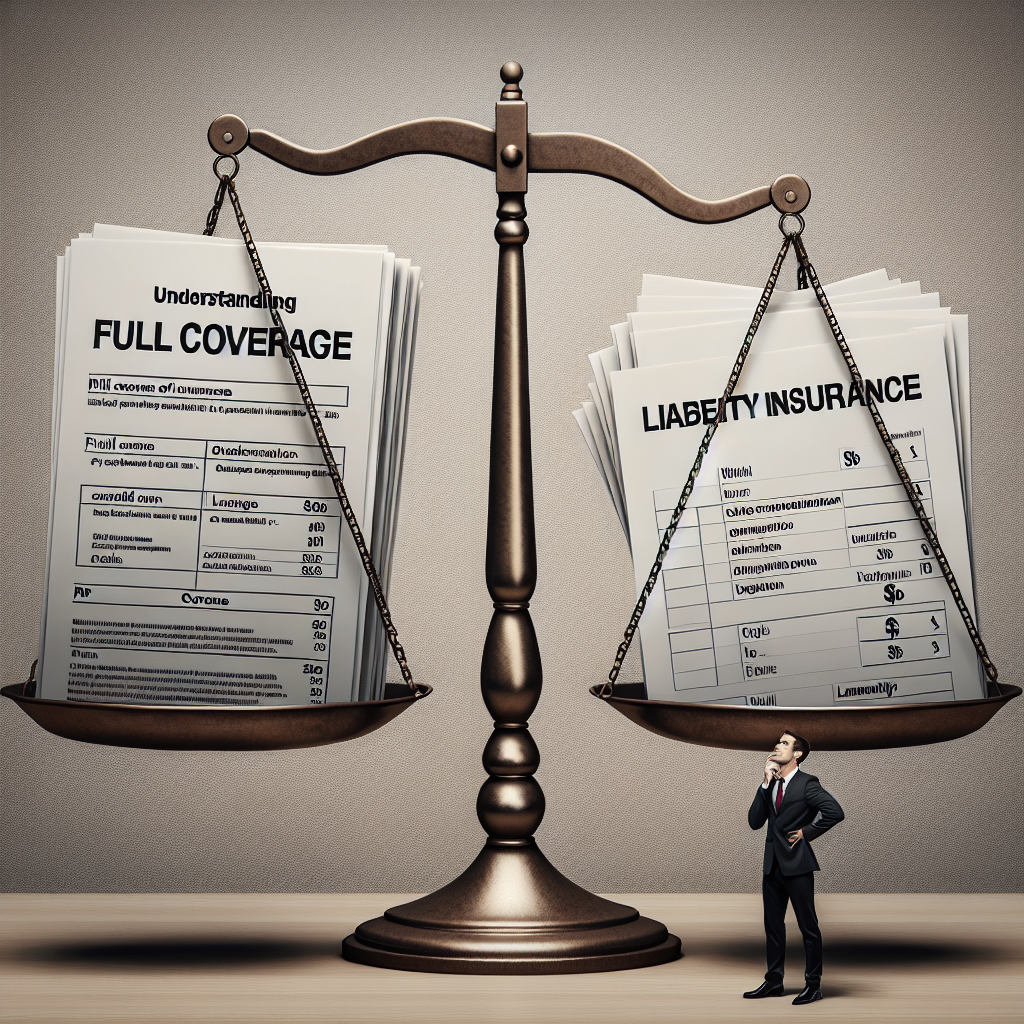When it comes to auto insurance, one of the most common dilemmas drivers face is choosing between full coverage and liability insurance. Both options have their benefits and drawbacks, which can leave many people feeling confused. In this article, we’ll break down the differences, helping you make an informed decision that best suits your needs and budget.
What is Liability Insurance?
Liability insurance is the most basic form of car insurance, and it’s typically required by law in most states. It covers the costs of damages or injuries you cause to others in an accident where you’re at fault. Here’s a closer look at what liability insurance covers:
Bodily Injury Liability
This part of liability insurance pays for medical expenses, lost wages, and pain and suffering for other drivers and passengers injured in an accident you caused. It can often cover legal costs if you’re sued over these injuries.
Property Damage Liability
This component covers the repair costs for vehicles and property damaged in an accident where you are at fault. Whether you damage another vehicle, a fence, or any other property, property damage liability ensures you’re financially protected.
What is Full Coverage Insurance?
Full coverage insurance is not a specific type of insurance but rather a combination of multiple coverages designed to protect you in a wider range of scenarios. Typically, full coverage includes liability coverage as well as comprehensive and collision coverage.
Collision Coverage
Collision coverage pays for damages to your vehicle resulting from a collision, regardless of who is at fault. If you hit another vehicle or a stationary object, your collision coverage can save you from steep repair bills.
Comprehensive Coverage
Comprehensive coverage offers protection against non-collision-related incidents. This could include theft, vandalism, natural disasters, or hitting an animal. If your car is damaged under circumstances other than a crash, comprehensive coverage can step in to help.
Pros and Cons of Liability Insurance
Pros
- Cost-Effective: Liability insurance is generally much cheaper than full coverage. If you’re on a tight budget, it’s a great way to meet legal requirements without breaking the bank.
- Simplicity: With fewer details to worry about, liability insurance is straightforward and easy to understand.
Cons
- Limited Protection: Liability insurance only covers damages to others and does not protect your own vehicle. If you’re involved in an accident, you’ll have to pay for your own repairs.
- Potential Legal Trouble: If you cause a serious accident and your liability limits don’t cover the full extent of the damages or injuries, you may be held personally responsible for the difference.
Pros and Cons of Full Coverage Insurance
Pros
- Comprehensive Protection: With full coverage, you’re protected against a wide range of risks, including those affecting your vehicle and those affecting others.
- Peace of Mind: Knowing that you’re covered in most situations can provide significant peace of mind when on the road.
Cons
- Higher Premiums: Full coverage insurance comes with a higher price tag. For some, this can be a significant drawback, especially for drivers of older vehicles.
- Complexity: The more coverages you have, the more complicated your policy becomes. This can make it challenging to keep track of what exactly you’re covered for.
Which is Right for You?
Choosing between full coverage and liability insurance ultimately comes down to your personal circumstances and preferences.
Consider Your Vehicle’s Value
If you have a newer or high-value vehicle, full coverage might be worth the investment. The potential cost of repairs or replacement after an accident can far exceed the premium differences. Conversely, if you own an older car with a low market value, liability insurance might be a more economical choice.
Assess Your Driving Habits
Consider how often you drive and the conditions you typically drive in. If you’re frequently on busy highways or in adverse weather conditions, full coverage might offer the reassurance you need. However, if you mostly drive in low-traffic areas and have a good driving record, liability insurance may suffice.
Financial Considerations
Take a close look at your budget. Full coverage can be significantly more expensive than liability, so it’s essential to weigh the costs against the benefits and determine what fits your financial situation best.
Conclusion
Understanding the differences between full coverage and liability insurance is essential for making an informed decision. By considering the value of your vehicle, your driving habits, and your financial situation, you can choose the coverage that aligns best with your needs. Remember, it’s always a good idea to consult with an insurance agent to explore your options further and clarify your doubts. The right insurance can provide peace of mind and protect you from potential financial loss. Happy driving!
This article is tailored for readability, clarity, and SEO optimization, making it easier for readers to navigate through the topic while being engaging. Let me know if you would like to add more specific keywords or adjust the content further!


